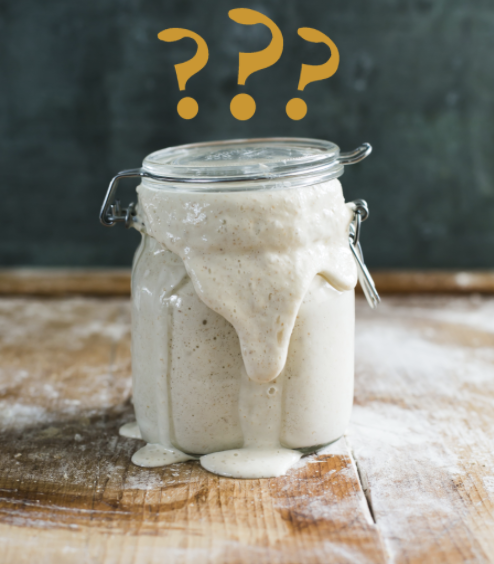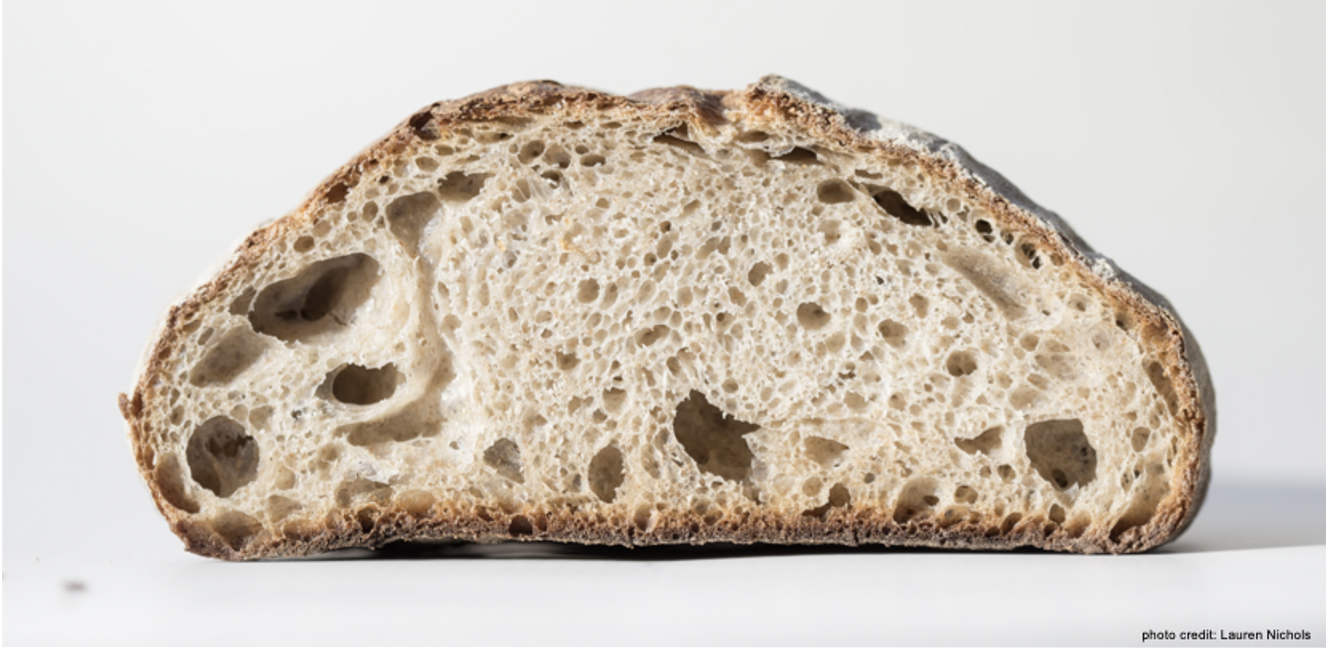4-H Sourdough Science
go.ncsu.edu/readext?767806
en Español / em Português
El inglés es el idioma de control de esta página. En la medida en que haya algún conflicto entre la traducción al inglés y la traducción, el inglés prevalece.
Al hacer clic en el enlace de traducción se activa un servicio de traducción gratuito para convertir la página al español. Al igual que con cualquier traducción por Internet, la conversión no es sensible al contexto y puede que no traduzca el texto en su significado original. NC State Extension no garantiza la exactitud del texto traducido. Por favor, tenga en cuenta que algunas aplicaciones y/o servicios pueden no funcionar como se espera cuando se traducen.
Português
Inglês é o idioma de controle desta página. Na medida que haja algum conflito entre o texto original em Inglês e a tradução, o Inglês prevalece.
Ao clicar no link de tradução, um serviço gratuito de tradução será ativado para converter a página para o Português. Como em qualquer tradução pela internet, a conversão não é sensivel ao contexto e pode não ocorrer a tradução para o significado orginal. O serviço de Extensão da Carolina do Norte (NC State Extension) não garante a exatidão do texto traduzido. Por favor, observe que algumas funções ou serviços podem não funcionar como esperado após a tradução.
English
English is the controlling language of this page. To the extent there is any conflict between the English text and the translation, English controls.
Clicking on the translation link activates a free translation service to convert the page to Spanish. As with any Internet translation, the conversion is not context-sensitive and may not translate the text to its original meaning. NC State Extension does not guarantee the accuracy of the translated text. Please note that some applications and/or services may not function as expected when translated.
Collapse ▲Humans have been baking bread all over the world for thousands of years, yet we know almost nothing about the microbes that make a loaf of traditional sourdough bread.
If you mix flour and water, the community of organisms that colonize the resulting concoction is almost always composed of a small handful of organisms that are able to leaven bread, yielding a sourdough starter. Yet, how this happens is one of civilization’s great mysteries, a mystery at the heart of bread making (and, for that matter, traditional beer brewing). While bakers generally understand how to make starters, the underlying biology of the species in these starters remains mysterious. A couple of years ago we launched the Global Sourdough Project and studied hundreds of existing starters from all over the world. While we learned a lot from these starters, there were still lingering questions that we couldn’t decipher from the data: How does the type of flour you use and where you live affect the success or failure of a wild sourdough starter? Together we can reveal how these communities form over time and understand how factors such as flour type or geography impact these communities. (2020 The Public Science Lab | Department of Applied Ecology | North Carolina State University)
By participating in a real science project, you can help us solve the mysteries of bread. Your data will be compared with data from other participants, all over the world, who have completed the same experiment. Together we can use these data to learn how different flours affect microbial growth over time – and how those microbes affect the taste and texture of bread. (Copyright 2017 studentsdiscover.org | All Rights Reserved)
You will even be able to bake your own bread!
Follow These Steps
(more information)
-
Set Up Experiment
-
- 2 Tablespoons of flour
You can use any type you like except coconut (gets too greasy). Rye, whole wheat, all-purpose, etc. all work fine.
- 2 Tablespoons of dechlorinated water
You can use filtered water or tap water. Leave it in a clear glass overnight to dechlorinate it.
-
- Mason-style glass jar or similar (half-pint or pint-sized jar; measure the diameter in centimeters)
- Cloth or paper napkins to use as jar covers
- Rubber band
- Ruler
- Measuring spoons
- Spoon for mixing
-
-
Create Starter
- Add the 2 Tbs of flour and 2 Tbs of dechlorinated water to the jar.
- Mix together thoroughly.
- Make sure you scrape down the sides of the jar.
- Cover the mouth of the jar with a paper towel or cloth and secure it using a rubber band.
- Place the jar in a warm (but not sunny!) place where it can be left alone for 24 hours.
Note: The top of a refrigerator works well!
-
Care for Your Sourdough
- Give it a name.
- Feed it.
- Remove the paper towel and use a spoon to mix your starter thoroughly.
- Smell your starter. Use our aroma wheel for sourdough as a reference.
- Remove 1 Tbsp of the starter and dump it into the trash or compost.
- Add 4 teaspoons (11/3 Tbsp) of flour and 1 Tbsp of water and mix well, scraping down the sides of the jar.
- Cover the jar with a paper towel.
- Put it back in its warm spot for 24 hours.
- Feed your starter once every 24 hours until you have fed it at least 14 times.
- After 4-5 days, you may notice that your starter reliably rises but then falls again and develops a layer of liquid on the surface before 24 hours have passed. This means your starter is hungry. Start feeding it once every 12 hours instead of once every 24 hours.
-
Collect Data
- Characterizing height
- When it is time to feed your starter for the fifteenth time, do NOT discard it. Instead, transfer 2 Tbsp of your starter to a new jar.
- Add 3 Tbsp flour and 2 Tbsp water and mix thoroughly, scraping down the sides. The starter will be a little thicker than usual.
- Draw a line on the jar with a marker to indicate the height of the starter.
- Use a ruler to measure the height of the starter from the base of the jar. This is your “Baseline” height.
- Set aside like normal. Every 3 hours, check on your starter and indicate the height with a new mark. Depending on how much starter you have, this may be all of it. That is ok, you will still have it at the end. We just want to make sure that everyone is starting with the same amount.
- If you set it up in the evening, it is OK to leave it overnight. Just check on it first thing in the morning.
- Keep checking on your starter every few hours until it is no longer growing in size.
- Measure the height in centimeters of the highest mark from the base of the jar. This is your “High Tide” mark.
- When it is time to feed your starter for the fifteenth time, do NOT discard it. Instead, transfer 2 Tbsp of your starter to a new jar.
- Characterizing aroma
- After you measure its height, remove the paper towel lid and give your starter a good sniff.
- What does your sourdough starter smell like? Use the Sourdough Aroma Wheel for reference.
- Take photos of starter
- Photo #1: Take a photo of the side view of the starter in its jar against a solid background.
- Tip: Use a sheet of plain white construction paper to make a background for your sourdough.
- Photo #2: Take a second photo from an aerial view, looking into the jar.
- Photo #1: Take a photo of the side view of the starter in its jar against a solid background.
- Characterizing height
-
Report Data
- Go to go.ncsu.edu/nc4-hsourdough.
- In the “Address” field, type your zip code.
- In the “Other Observations” field, type NC 4-H and the name of your county.
- Example: NC 4-H Northampton County
- Complete the rest of the form as you normally would.
More information and how to submit your findings.
Helpful Worksheets
- Aroma wheel for sourdough
- Sourdough Starter Log
- Bread Recipe – Tiny Loaves for Tiny Hands
- Sourdough for Science Activity Overview
All information is from Rob Dunn Lab.






